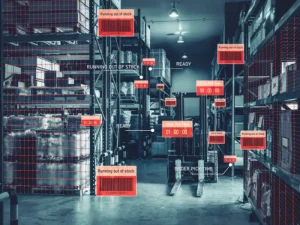In our previous article, “Spotting the Illusion: 5 Key Deepfake Characteristics,” we uncovered the subtle signs that distinguish fake from real, from awkward blinks to mismatched lighting and imperfect speech patterns. But as deep-fake technology evolves, those visual flaws are vanishing. What once could be spotted with a trained eye is now nearly indistinguishable from truth itself.
We are entering the Era of Synthetic Reality, a time when technology no longer just captures reality, but recreates it. Deepfakes, powered by advanced artificial intelligence, have blurred the boundary between authentic and artificial. Every image, recording, and message is now open to doubt. As a result, a digital landscape where truth must constantly prove itself. This shift marks one of the most profound challenges of the modern information age, not just for cybersecurity experts, but for everyone who relies on trust to make decisions, connect, and communicate.
From Innovation to Manipulation
Deepfakes began as an innovation, a fascinating fusion of creativity and computation. Using deep learning, AI models analyze thousands of data points, facial expressions, voice tones, and even emotional cues to generate lifelike simulations. Early adopters saw promise in film production, education, and accessibility tools. But what started as a creative experiment soon turned into a tool for manipulation. Malicious actors began using deepfakes to spread misinformation, impersonate leaders, or conduct digital fraud. The transition from artistry to deception was fast and quiet, and the consequences have reached a global scale.
When Seeing Isn’t Believing
The true danger of deepfakes lies not in technology itself, but in their potential to destroy trust. In politics, deepfakes have been used to sway public opinion with fabricated speeches or scandals. In business, cybercriminals have mimicked executives’ voices to authorize fraudulent wire transfers. In society, they have fueled harassment and misinformation, damaging reputations before the truth has a chance to surface.
When reality can be artificially rewritten, the consequences go beyond deception; they erode the foundation of credibility. It is not just about fake videos, but also about what happens when people stop believing in anything they see.
The Vanishing Line Between Real and Artificial
As AI models evolve, deepfakes are no longer limited to faces or voices. They can now generate entire scenes, personalities, or narratives that feel alarmingly authentic. The more convincing synthetic media becomes, the more fragile digital trust grows. Even legitimate evidence, such as videos from eyewitnesses, recordings from journalists, or corporate security footage, may soon be dismissed as fabricated.
This is not just a technological concern; it is a psychological one. The human mind depends on sensory trust, and deepfakes exploit that instinct. Once reality itself is questioned, disinformation does not need to be convinced; it only needs to be confused.
Building Digital Trust in a Synthetic World
As deepfakes grow more sophisticated, the response must move beyond detection and toward prevention and verification. Governments, media institutions, and cybersecurity firms are now working to establish digital authentication systems and AI-driven frameworks that verify the integrity of content before it spreads.
But technology alone cannot win this fight. Building digital trust also means empowering people to question what they consume, to pause before sharing, and to understand how easily truth can be distorted. Because in the age of synthetic reality, awareness is as critical as algorithms.
At Terrabyte, we believe cybersecurity goes beyond defending systems; it protects the integrity of information itself. Through advanced AI monitoring, behavioral analytics, and digital trust frameworks, Terrabyte helps organizations detect manipulation early, secure communications, and foster resilience in a world where even reality can be rewritten. The era of synthetic reality demands more than vigilance; it requires vision.



